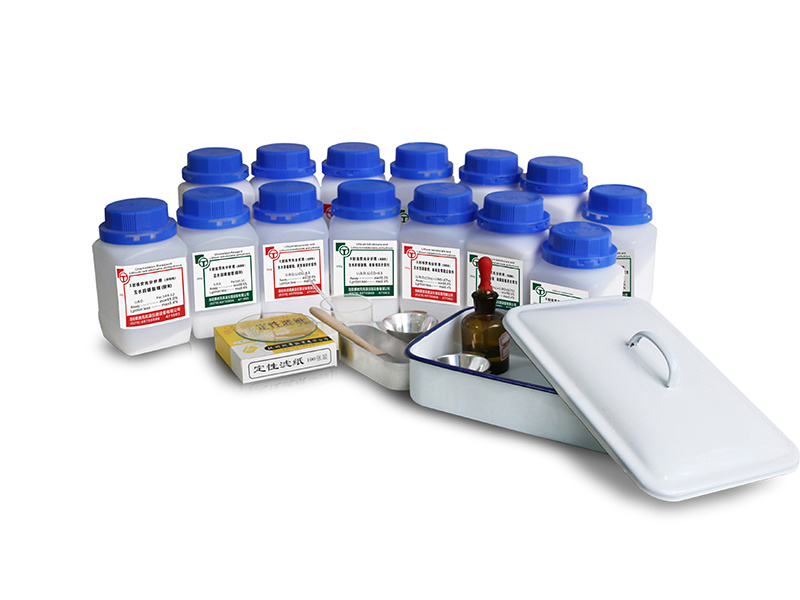Lithium Tetraborate
Keywords:
Lithium Tetraborate
Category:

Hotline:
Lithium Tetraborate
Our company produces anhydrous lithium tetraborate and anhydrous lithium metaborate reagents for X-ray fluorescence analysis. These reagents are characterized by high purity, stable quality, and good performance (no calcination required before use). We also offer the following special specifications of fluxes:
Reagent Name | Lithium tetraborate anhydrous | Lithium metaborate anhydrous | Lithium carbonate | Mixed Flux 1# | Mixed Flux 2# |
Molecular Formula | Li2B4O7 | LiBO2 | Li2CO3 | 66.7%Li2B4O7+33.3%LiBO2 | 33.3%Li2B4O7+66.7%LiBO2 |
Specifications | Analytical Reagent/Superior Reagent | Analytical Reagent/Superior Reagent | Analytical Reagent/Superior Reagent | Analytical Reagent/Superior Reagent | Analytical Reagent/Superior Reagent |
State | White granules, slightly soluble in water and dilute hydrochloric acid | White granules, slightly soluble in water and dilute hydrochloric acid | White powder | White granules, slightly soluble in water and dilute hydrochloric acid | White granules, slightly soluble in water and dilute hydrochloric acid |
Main Component | >99.0%/99.5% | >99.0%/99.5% | >99.0%/99.5% | >99.0%/99.5% | >99.0%/99.5% |
Loss on Ignition | <0.4% | <0.4% | <0.4% | <0.4% | <0.4% |
Packaging Specifications | 250g/bottle 500g/bottle 1000g/bottle | ||||
Reagent Name | Mixed Flux 3# | Mixed Flux 4# | Mixed Flux 5# | Mixed Flux 6# |
Molecular Formula | 6Li2B4O7+1 Li2CO3 | 12Li2B4O7+22LiBO2 | 65Li2B4O7+25LiBO2+10LiF | Iron ore cobalt powder reagent (1:9 1:10) |
Specifications | Analytical Reagent/Superior Reagent | Analytical Reagent/Superior Reagent | Analytical Reagent/Superior Reagent | Analytical Reagent/Superior Reagent |
State | White granules, slightly soluble in water and dilute hydrochloric acid | White granules, slightly soluble in water and dilute hydrochloric acid | White granules, slightly soluble in water and dilute hydrochloric acid | Blue powder |
Main Component | >99.0%/99.5% | >99.0%/99.5% | >99.0%/99.5% | >99.0%/99.5% |
Loss on Ignition | <0.4% | <0.4% | <0.4% | <0.4% |
Packaging Specifications | 250g/bottle 500g/bottle 1000g/bottle | |||
Comparison of Pressing Method and Fused Glass Disc Method
Processing Method | Pressing Method | Fused Glass Disc Method |
Sample | All powders | Limited to oxide powders |
Quantitative Accuracy | Poor | Very good |
Preparation Time | 1 minute | 10~20 minutes |
Price | Low price | High price |
Comprehensive Evaluation:
(1) The pressing method is often used for occasions with few varieties and low requirements for analytical errors, while the glass fusion method is often used for occasions with high requirements for errors. Because the fusion method can overcome the influence of particle size effect and mineral effect.
(2) In most cases, the powder is composed of irregular fine crystals. In the glass fusion method, the crystals disappear and become a microscopically uniform sample, thus improving the accuracy and meeting the error requirements of the analysis standard.

Inquiry Message
We will contact you within one working day. Please pay attention to your email.
Scan

Luoyang Turner High Temperature Instrument Co., Ltd.
+86-400-880-7095
Sales (same as WeChat):18695992058
Contact:+86-379-69755886
Address: South Section of Shuangxiang Road, Luoxin Industrial Cluster, Luoyang City, Henan Province
Email:tnkinstrument@163.com
Copyright © Luoyang Tainake High-Temperature Instrument Equipment Co., Ltd. IPV6
